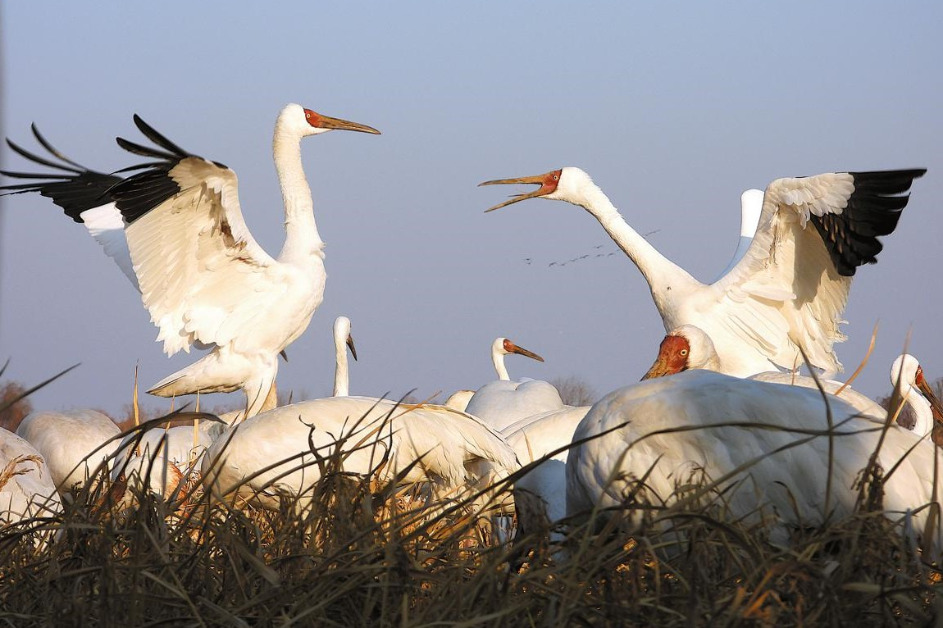Effective steps needed to protect elephants


Editor's note: A herd of more than a dozen elephants marching northward from their habitat in Xishuangbanna of Yunnan province has drawn worldwide attention. Some Chinese scientists, mostly from Yunnan, has written a group research report on protecting Asian elephants. Excerpts follow:
China should accord priority to the protection of wildlife, including large mammals such as elephants, as part of its national policy of building an ecological civilization. In China, wild elephants are found only in Yunnan, a province with dense forests and rich in biodiversity. So the Yunnan authorities should shoulder the special responsibility of protecting Asian elephants using domestic and foreign resources, devising a sustainable model for wildlife protection and helping build a harmonious relationship between humans and nature.
Ethnic groups in southern Yunnan have a tradition of worshipping and protecting elephants. No wonder the elephant enjoys a high status in the local culture. And this high cultural status has played a very important role in protecting the Asian elephants throughout Chinese history.
China has made significant efforts to protect wild elephants. Over the last three decades, the number of wild elephants has grown from about 150 to 300. But despite their total habitat being as expansive as 7,000 square kilometers, most of it is fragmented into patches of forest and close to the residential areas of 12 ethnic groups, which have high population density and are thus under pressure to develop the local economies.
Over the years, China has implemented the Forest Law and the Wildlife Protection Law, and the authorities in Yunnan have introduced regulations and rules that offer strong legal support to the construction of nature reserves and protection of wild animals and their habitats. At present, China has 11 elephant nature reserves covering more than 4,200 sq km.
The administration and management departments of nature reserves in China are cooperating with international wildlife protection organizations to better safeguard flora and fauna in the wild. Also, the government has signed agreements with three provinces of neighboring Laos to set up cross-border nature reserves for Asian elephants covering about 133 sq km.
But the movements of elephant herds and the human-elephant conflicts in Yunnan in recent years reflect the challenges facing elephant conservation in China. Also, about two-thirds of the wild elephants in Yunnan live outside protected areas, partly because the protected forests are mostly covered by woody plants while Asian elephants mainly feed on plantain and gramineae.
Studies have shown that the pachyderms often forage and feed on shrubs and small trees. But the dense forest canopy means a dearth of ideal food for the elephants in the nature reserves. As a result, they are forced to search for food in nearby farmlands. Besides, the fragmented habitats have also contributed to their wandering into residential areas.
As incidents of wild elephants leaving their natural habitats have been increasing over the past years, the authorities should set up research and protection institutes to better protect the animals, for which they would need both governmental financial support and social investment.
The authorities need to take certain measures to strengthen protection for the elephants. And it's high time to set up a national park for Asian elephants.
First, local governments should promote the transformation of the communities from traditional farming to ecological services, use innovative ways to prevent human-elephant conflicts, and improve the overall well-being of local residents.
Second, the local authorities should implement policies to encourage residents to live a harmonious life with wild animals within or near the nature reserves, upgrade the protective measures, optimize the structure of food and create corridors to improve the elephant habitats. For this, the governments need to reinforce houses and build boundary walls around the habitats to safeguard people's lives and property. They should also establish ecological functional zones for the elephants and launch a mechanism to compensate the people who are attacked or whose properties are damaged by the elephants.
Third, the authorities should consider combining the existing nature reserves to create a national park for the Asian elephant, and strengthen the management and operation mechanisms to better protect the elephants as well as boost local development. They should also establish a research and monitoring center and an academic institution to improve the early warning system, and to conduct research on the Asian elephant.
Fourth, there is also a need to attract funds from the international community, especially developed countries, for the study and protection of Asian elephants.
And fifth, the central government can strengthen global cooperation and jointly establish cross-border protection areas and national parks with neighboring countries. China can take the lead by setting up a foundation to promote international academic exchanges, and show the success of its efforts to protect wild elephants and build an ecological civilization to attract global partners to co-finance and co-develop nature conservation projects to better protect wild elephants and other wildlife.
In other words, China needs to use feasible and effective measures to better protect wild elephants and their habitats.
































